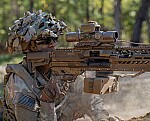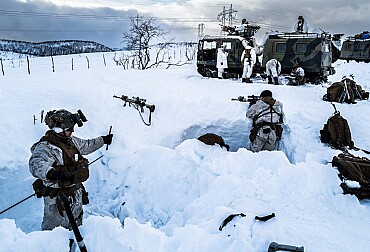Is the Alliance deterrence strategy still credible?
The deterioration of the global security situation and the increase in conflicts that affect global development may point to the fact that it is worthwhile for our adversaries to use military force in international relations at this time. The outbreak of war in Ukraine, Ansar Allah attacks on international shipping in the Red Sea, Hamas terrorist attacks on Israel and the continuing Chinese threat in the Indo-Pacific raise the question of whether the deterrence strategy of the Western powers or NATO is still credible and workable.

The concept of deterrence is inextricably linked to the Cold War and the rise of nuclear weapons, but even today its importance is not diminishing, quite the contrary. In general terms, the term deterrence means an activity that deters an opponent or potential opponent from a specific action and the latter subsequently refrains from further action. Typically, in international relations, it is a deterrence of an attack by one state on another. The literature distinguishes four following types of deterrence: Deterrence by Denial, Deterrence by Punishment, Direct Deterrence, and Extended Deterrence.
Deterrence by Denial consists of deterring a particular state from taking action through a course of action of its own that renders the original course of action unworkable and, in the extreme case, causes significant losses to the opponent. Thus, it may involve the deployment of sufficient forces and resources to prevent an adversary from carrying out an invasion or other action. It may also be about building a robust air defence network that achieves a high success rate in shooting down air targets.
Deterrence by Punishment involves deterrence by deploying means that, if attacked, may lead to punishment of the attacker - an escalation that will be unacceptable to the attacker. These include, for example, the deployment of nuclear weapons or devastating economic sanctions.
Direct Deterrence is a subspecies of deterrence, as it involves direct deterrence by one actor against another actor. An example would be direct deterrence of aggression against one's own territory - for example, the U.S. deterrence of a Soviet nuclear attack on the United States during the Cold War.
Extended Deterrence involves deterring an actor and dissuading it from attacking a third actor. A typical example is the U.S. deterrence of a Soviet attack on European members of the Alliance during the Cold War. A certain remnant of extended deterrence is also the deployment of nuclear weapons on the territory of European members of the Alliance under the nuclear-sharing programme.
Although the Alliance has no contractual defence commitments with Ukraine, unfortunately, prior to 24 February 2022 (Russian invasion of Ukraine) the West has failed to deter Russia from its use of brute force against Ukraine. Thus, Russia has been waging an armed conflict in Ukraine for two years now, and according to the assessment of some experts, it is not excluded that in the coming years (albeit to a limited extent) Russia could also invade a member state of the North Atlantic Alliance. In contrast, Russia appears to have succeeded in credibly dissuading the Alliance from providing more massive support to a struggling Ukraine.
Nor did the US or the West's deterrence prevent the attack on Israel by the terrorist movement Hamas (7 October 2023), if we accept that it is possible to deter terrorist organisations effectively at all. Subsequently, in support of Hamas's efforts, the Ansar Allah terrorist movement (supported by Iran) launched attacks against shipping on one of the world's main maritime thoroughfares - the Red Sea. Once again, therefore, the the United States or the international coalition failed to deter a particular actor from using force and the coalition was forced to launch strikes against Ansar Allah positions. As usual, the United States played a major role in these strikes, moving significant assets, including aircraft carriers, into the area. However, even these precision strikes have not deterred the movement from undertaking further attacks on commercial vessels.
From the Democratic People's Republic of Korea (DPRK) and Iran, we have also seen various recent activities that demonstrate that the states in question are not deterred by (less likely) military strikes or (more likely) economic sanctions. Similarly, the People's Republic of China, whose indirect support for Russia continues and shows no sign of ending. Moreover, its activities in the Indo-Pacific are steadily increasing.
The general importance of the Alliance as such, including the benefits of national membership, is indisputable. However, the above-mentioned events show that the deterrent (conventional) potential of the major Western powers or the Alliance is weakening, and it is therefore appropriate to ask whether and how NATO will be able to effectively deter Russia from attacking Alliance member states in the future, especially on its eastern flank. In this context, the recent statement by former U.S. President Donald Trump (who is apparently running for office again) that the United States under his leadership will not defend NATO countries that do not spend enough on defence against Russia cannot be taken lightly.







